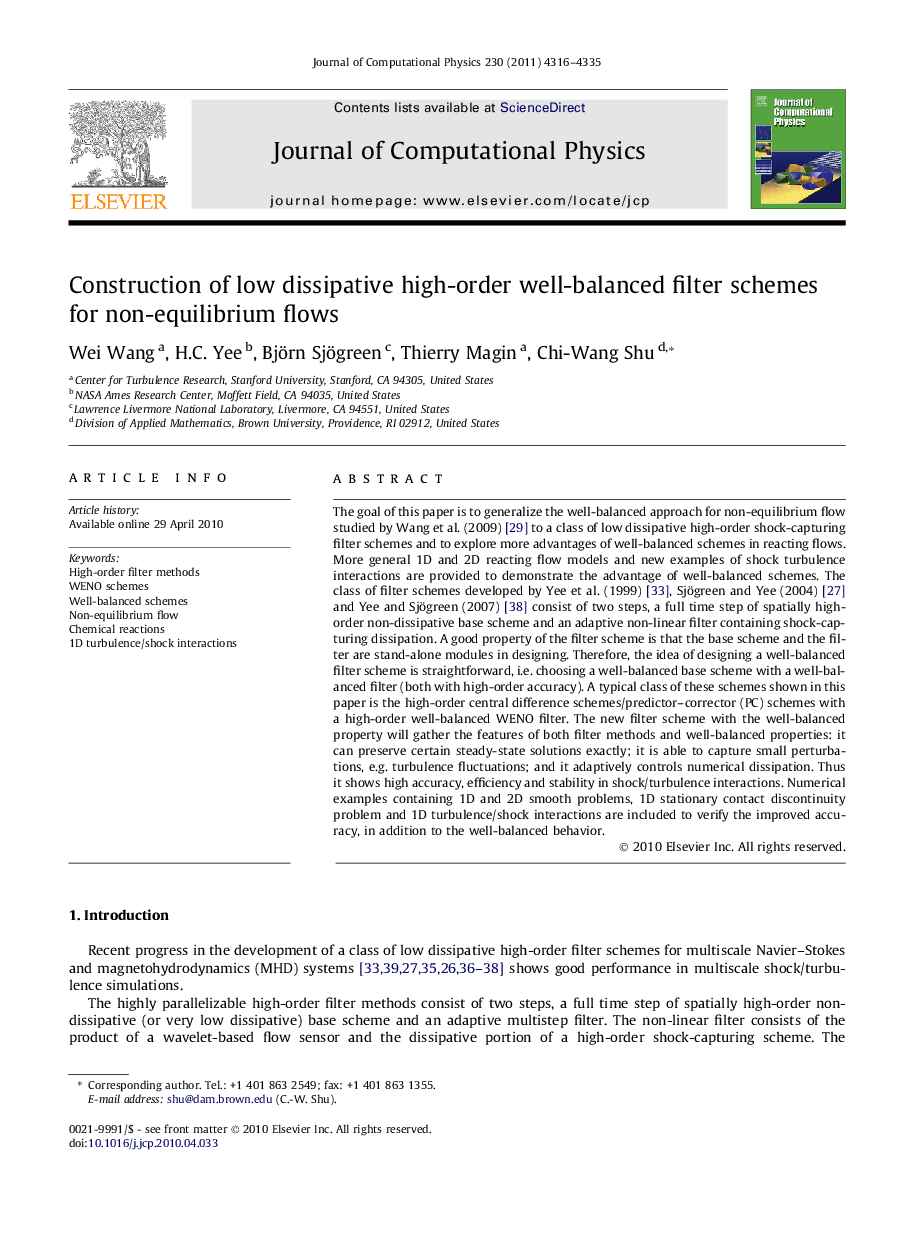| کد مقاله | کد نشریه | سال انتشار | مقاله انگلیسی | نسخه تمام متن |
|---|---|---|---|---|
| 522050 | 867807 | 2011 | 20 صفحه PDF | دانلود رایگان |

The goal of this paper is to generalize the well-balanced approach for non-equilibrium flow studied by Wang et al. (2009) [29] to a class of low dissipative high-order shock-capturing filter schemes and to explore more advantages of well-balanced schemes in reacting flows. More general 1D and 2D reacting flow models and new examples of shock turbulence interactions are provided to demonstrate the advantage of well-balanced schemes. The class of filter schemes developed by Yee et al. (1999) [33], Sjögreen and Yee (2004) [27] and Yee and Sjögreen (2007) [38] consist of two steps, a full time step of spatially high-order non-dissipative base scheme and an adaptive non-linear filter containing shock-capturing dissipation. A good property of the filter scheme is that the base scheme and the filter are stand-alone modules in designing. Therefore, the idea of designing a well-balanced filter scheme is straightforward, i.e. choosing a well-balanced base scheme with a well-balanced filter (both with high-order accuracy). A typical class of these schemes shown in this paper is the high-order central difference schemes/predictor–corrector (PC) schemes with a high-order well-balanced WENO filter. The new filter scheme with the well-balanced property will gather the features of both filter methods and well-balanced properties: it can preserve certain steady-state solutions exactly; it is able to capture small perturbations, e.g. turbulence fluctuations; and it adaptively controls numerical dissipation. Thus it shows high accuracy, efficiency and stability in shock/turbulence interactions. Numerical examples containing 1D and 2D smooth problems, 1D stationary contact discontinuity problem and 1D turbulence/shock interactions are included to verify the improved accuracy, in addition to the well-balanced behavior.
Journal: Journal of Computational Physics - Volume 230, Issue 11, 20 May 2011, Pages 4316–4335